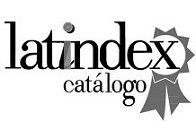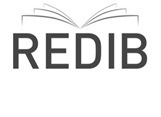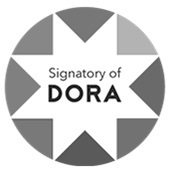Hogwarts ‘Monsters’: Citizenship and Frontier in J. K. Rowling’s Stories from the Wizarding World
DOI:
https://doi.org/10.30972/clt.237534Keywords:
monster, otherness, Wizarding World, fantastic literature, J. K. RowlingAbstract
This article explores the way in which monsters are depicted in J. K. Rowling’s stories from Wizarding World. It contributes to the discussions on the subject by giving a thematic perspective which takes into consideration which takes into consideration the relationships configured within the fictional world itself, its intern rules and axiology. The methodology is based on an articulation of both quantitative and qualitative techniques. Firstly, a survey was carried out in order to identify the lexical forms which were used in these stories to name different groups of beings. With those initial results in mind, we set for a qualitative analysis that takes into consideration factors such as: worldbuilding, character construction, ethical and political aspects. Our study shows that these stories displace the idea of monstrosity: instead of identifying features in non-human characters, it moves towards the representation of human characters. Therefore, it is argued that these stories discuss the construction of otherness and rights within the fictional world.
References
Anatol, Liza Gisel (ed.). (2003). The Fallen Empire: Exploring Ethnic Otherness in the World of Harry Potter. En Reading Harry Potter: Critical essays (pp. 163-178). Connecticut, Preager. DOI: https://doi.org/10.5040/9798216005377.ch-012
Beville, Maria. (2013). The Unnameable Monster in Literature and Film. Nueva York, Routledge. DOI: https://doi.org/10.4324/9780203496916
Calleja, Seve. (2016). Desdichados monstruos: la imagen grotesca y deformada de “el otro”. Madrid, Ediciones de la Torre.
Campbell, Joseph. (1949). The Hero with a Thousand Faces. Novato, New World Library.
Carrera Garrido, Miguel. (2018). Fantástico y terror: teoría y práctica de dos categorías ficcionales en el ámbito hispánico. Studia Romanica Posnaniensia, 45(2), 5-20. DOI: https://doi.org/10.14746/strop.2018.452.001
Carrizo, Walter José. (2021). Basiliscos, sirenas y centauros: la tradición teratológica clásica en el género de los libros de caballerías castellanos (ss. XVI-XVII) [Ponencia]. X Jornadas de Estudios Clásicos y Medievales. La Plata, Universidad Nacional de La Plata. https://bit.ly/3Ulg4h7
Clute, John y Grant, John (eds.). (1997). The Encyclopedia of Fantasy. Londres, Orbit.
Clute, John. (2016). El jardín crepuscular. Breve glosario del horror. Barcelona, Gilgamesh.
Cohen, Jeffrey Jerome (ed.). (1996). Monster Culture (Seven theses). En Monster Theory: Reading Culture (pp. 3-25). New York, Plymbridge. DOI: https://doi.org/10.5749/j.ctttsq4d.4
Cortés, José Miguel. (1997). Orden y caos. Un estudio cultural sobre lo monstruoso en las artes. Barcelona, Anagrama.
Figari, Carlos. (2009). Las emociones de lo abyecto: repugnancia e indignación. En Figari, Carlos y Adrián Scribano (comp.), Cuerpo(s), Subjetividad(es) y Conflicto(s): hacia una sociología de los cuerpos y las emociones desde Latinoamérica (pp. 131-139). Buenos Aires, CLACSO.
Gagliardi, Lucas. (2011). Palabra y construcción de la identidad en Harry Potter and the Philosopher's Stone. X Jornadas Nacionales de Literatura Comparada [Ponencia] La Plata, Universidad Nacional de La Plata. https://acortar.link/BLTdba
Gagliardi, Lucas. (2017). Sueños interrumpidos: el american dream en Animales fantásticos y dónde encontrarlos. La Colmena, (94), 25-32.
Gagliardi, Lucas. (2018). Intermitencias de lo fantástico en la obra de J. K. Rowling: Épica, policial y sátira en un fantasy híbrido. Luthor, 36, 38-58. https://acortar.link/qVo4FP
Gagliardi, Lucas. (2020). Ecos de una saga: aproximaciones a Harry Potter. La Plata, EDULP.
Ingebretsen, Edward. (2001). At Stake: Monsters and the Rhetoric of Fear in Public Culture. Chicago, Chicago University Press.
Jackson, Rosemary. (1986). Fantasy: literatura y subversión. Buenos Aires, Catálogos.
Jobling, J’anine. (2010). Fantastic Spiritualities: Monsters, Heroes and the Contemporary Religious Imagination. Londres, T&T Clark.
Kappler, Clade. (2004). Monstruos, demonios y maravillas a fines de la Edad Media. Madrid, Ediciones Akal.
Koenig-Woodyard, Chris; Nanayakkara, Shalini y Khatri, Yashvi. (2018). Introduction: Monster Studies. University of Toronto Quarterly, 87(1), 1-24. DOI: https://doi.org/10.3138/utq.87.1.1
Lucía Mejías, José Manuel. (2002). La otra realidad social en los libros de caballerías castellanos. 1. Los enanos. Rivista di filologia e letterature ispaniche, 5, 9-24.
Mendlesohn, Farah. (2008). Rhetoric of Fantasy. Middletown, Wesleyan University Press.
Mendlesohn, Farah. (2012). Thematic Criticism. En James, Edward y Mendlesohn, Farah (eds.), The Cambridge Companion to Fantasy Literature (pp. 125-133). Cambridge, Cambridge University Press. DOI: https://doi.org/10.1017/CCOL9780521429597.012
Moreno Serrano, Fernando Ángel. (2011). El monstruo prospectivo: el otro en la ciencia ficción. Signa, 20, 471-496. https://acortar.link/BB6IiY DOI: https://doi.org/10.5944/signa.vol20.2011.6275
Narvaja de Arnoux, Elvira. (2009). Análisis del discurso: modos de abordar materiales de archivo. Buenos Aires, Santiago Arcos.
Pottermore. (28 de marzo de 2018). In Defense of Griphook. Wizarding World. https://acortar.link/kmkMa3
Rowling, Joanne K. (1997). Harry Potter and the Philosopher’s Stone. Londres, Bloomsbury.
Rowling, Joanne K. (1998). Harry Potter and the Chamber of Secrets. Londres, Bloomsbury.
Rowling, Joanne K. (1999). Harry Potter and the Prisoner of Azkaban. Londres, Bloomsbury.
Rowling, Joanne K. (2000). Harry Potter and the Goblet of Fire. Londres, Bloomsbury.
Rowling, Joanne K. (2001a). Fantastic Beasts and Where to Find Them. Londres, Bloomsbury.
Rowling, Joanne K. (2001b). Quidditch Through the Ages. Londres, Bloomsbury.
Rowling, Joanne K. (2003). Harry Potter and the Order of the Phoenix. Nueva York, Scholastic.
Rowling, Joanne K. (2005). Harry Potter and the Half-Blood Prince. Londres, Bloomsbury.
Rowling, Joanne K. (2007). Harry Potter and the Deathly Hallows. Londres, Bloomsbury.
Rowling, Joanne K. (2008). The Tales of Beedle the Bard. Londres, Arthur A. Levine Books.
Rowling, Joanne K. (2016). Fantastic Beasts and Where to Find Them. The Original Screeenplay. Londres, Arthur A. Levine Books.
Rowling, Joanne K. (2018). Fantastic Beasts: The Crimes of Grindelwald. Original Screeenplay. Londres, Pottermore Publishing.
Rowling, Joanne K. y Kloves, Steve. (2022). Fantastic Beasts: The Secrets of Dumbledore. Original Screeenplay. Londres, Pottermore Publishing.
Rowling, Joanne K., Thorne, Jack y Tiffany, John (2016). Harry Potter and the Cursed Child. Londres, Arthur A. Levine Books.
Santiesteban, Héctor. (2003). Tratado de monstruos: ontología teratológica. México D. F., Plaza y Valdés.
Soares Faria, Paula. (2008). The Journey of the Villain in the Harry Potter series: An Archetypal Study of Fantasy Villains [Tesis de Maestría en Letras]. Universidad Federal de Minas Gerais. https://bit.ly/3Wotvzd
Tolkien, John R. R. (1984). The Monsters and the Critics and Other Essays. Boston, Houghton Mifflin Company.
Trapero Llobera, Patricia. (2015). “Todos los monstruos son humanos”: el imaginario cultural y la creación de bestiarios contemporáneos en American Horror Story. Brumal. Revista de Investigación sobre lo Fantástico, 3(2), 69-88. http://dx.doi.org/10.5565/rev/brumal.210 DOI: https://doi.org/10.5565/rev/brumal.210









52.jpg)









